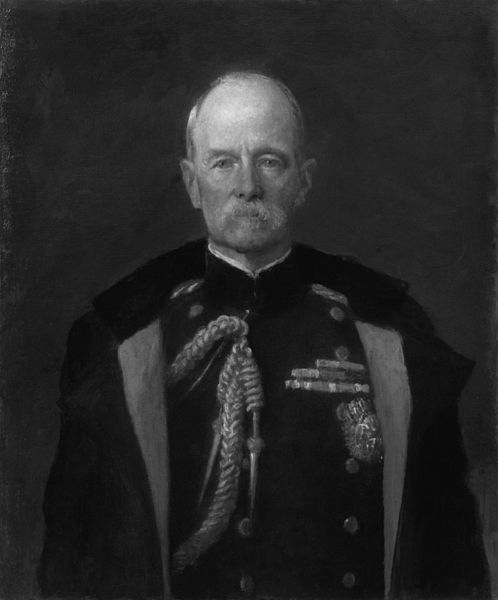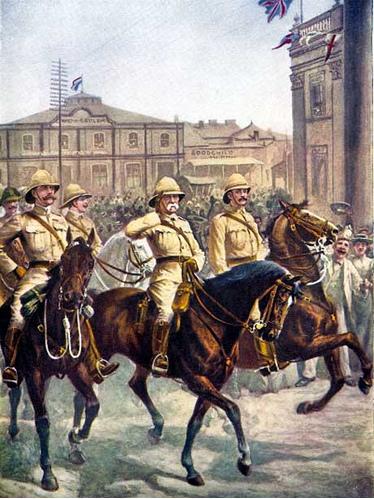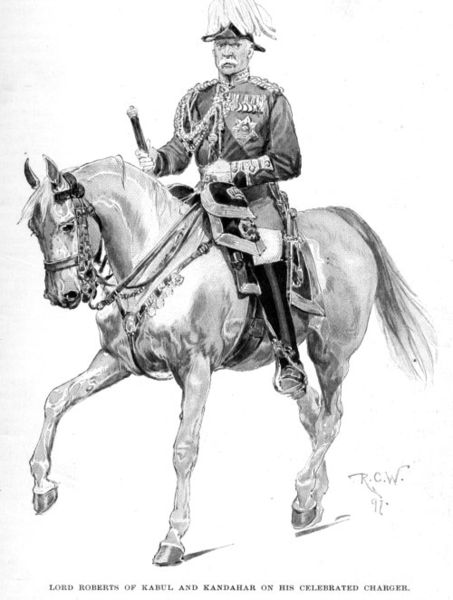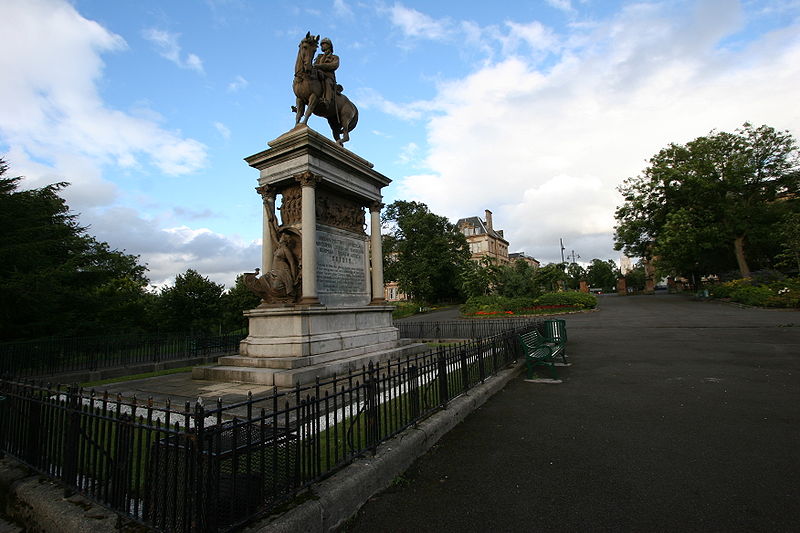<Back to Index>
- Field Marshal of the British Army Frederick Sleigh Roberts, 1832
PAGE SPONSOR
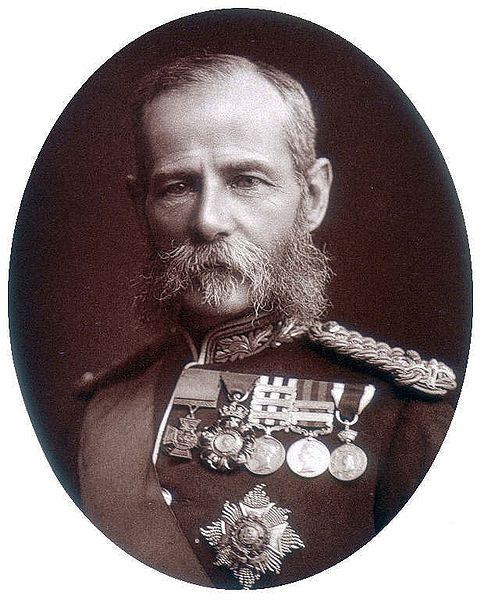
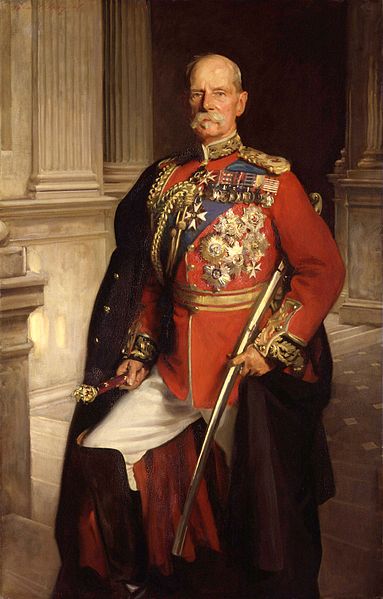
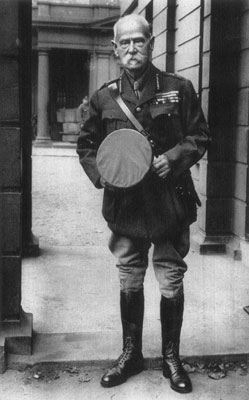
Field Marshal Frederick Sleigh Roberts, 1st Earl Roberts, Bt, VC, KG, KP,GCB, OM, GCSI, GCIE, KStJ, PC (30 September 1832 – 14 November 1914) was a distinguished Indian born British soldier who regarded himself as Anglo - Irish and one of the most successful British commanders of the 19th century.
Born at Cawnpore, India, on 30 September 1832, Lord Roberts was the second son of General Sir Abraham Roberts, a native of County Waterford in the south - east of Ireland. At the time Sir Abraham was commanding the 1st Bengal European Regiment. Roberts was named Sleigh in honour of the garrison commander, Major - General William Sleigh. His mother was Edinburgh born Isabella Bunbury, daughter of Major Abraham Bunbury from Kilfeacle in County Tipperary. Roberts was educated at Eton, Sandhurst and Addiscombe Military Academy before entering the British East India Company Army as a Second Lieutenant with the Bengal Artillery on 12 December 1851.
He fought in the Indian rebellion (also known as the Indian Mutiny) of 1857, seeing action during the siege and capture of Delhi, and was present at the relief of Lucknow, where he was attached to the staff of Sir Colin Campbell, Commander - In - Chief, India.
During December 1858, Roberts was awarded the Victoria Cross medal for actions on 2 January of that year at Khudaganj. The citation reads:
Lieutenant Roberts' gallantry has on every occasion been most marked.
On following the retreating enemy on the 2nd January, 1858, at Khodagunge, he saw in the distance two Sepoys going away with a standard. Lieutenant Roberts put spurs to his horse, and overtook them just as they were about to enter a village. They immediately turned round, and presented their muskets at him, and one of the men pulled the trigger, but fortunately the caps snapped, and the standard - bearer was cut down by this gallant young officer, and the standard taken possession of by him. He also, on the same day, cut down another Sepoy who was standing at bay, with musket and bayonet, keeping off a Sowar. Lieutenant Roberts rode to the assistance of the horseman, and, rushing at the Sepoy, with one blow of his sword cut him across the face, killing him on the spot.
He managed to capture Kabul, and defeated Muhammad Yakub Khan, the Afghan emir. For his services, Sir Frederick again received the thanks of Parliament, and was appointed both Knight Grand Cross of the Order of the Bath (GCB) and Companion of the Order of the Indian Empire (CIE) during 1880, becoming a baronet the next year.
After a very brief interval as Governor of Natal and Commander - in - Chief of British forces in South Africa, Roberts (having been promoted to Lieutenant - General during 1883) was appointed Commander - in - Chief of the Madras Army, a post he had for four years. During 1885 he succeeded this appointment as Commander - in - Chief throughout the whole of India, and two years later was appointed Knight Grand Commander of the Order of the Indian Empire (GCIE). This was followed subsequently by his promotion to General during 1890, and during 1892 he was created Baron Roberts, of Kandahar in Afghanistan and of the City of Waterford.
After relinquishing his Indian command and becoming Knight Grand Commander of the Order of the Star of India during 1893, Lord Roberts two years later was relocated to Ireland as Commander - in - Chief of British forces there, being based at the Royal Hospital, Kilmainham. He was promoted Field Marshal during 1895 and received the Order of St Patrick during 1897.
Two years later, he returned to South Africa on the RMS Dunottar Castle in command of British troops fighting in the Second Boer War, relieving Kimberley and advancing to Pretoria. After a year, he was succeeded in the command by Lord Kitchener, and returned to England to receive yet more honours: he was made a Knight of the Garter and also created Earl Roberts, of Kandahar in Afghanistan and Pretoria in the Transvaal Colony and of the City of Waterford, and Viscount St Pierre.
He became the honorary Colonel of the Irish Guards during
1900, an appointment he kept for the remainder of his life, which
gained the regiment the nickname 'Our Bobs'. He was also the next year,
1902, appointed one of the first members of the Order of Merit. He was later installed as a Knight of the Order of St John (KstJ) and received the Service Medal of the Order of St John with 3 Bars.
Lord Roberts served as the last Commander - in - Chief of the Forces for three years before the post was abolished during 1904, and for the last ten years of his life received yet more honours, including numerous honorary degrees and the Colonelcy of the National Reserve. He was the initial president of the Pilgrims Society during 1902. He was a keen advocate of introducing conscription in Britain (directing the National Service League) to prepare for a great European war.
Immediately
after his return from the Boer War, he was instrumental in promoting
the mass training of civilians in rifle shooting skills through
membership of shooting clubs, and a facsimile of his signature appears
to this day on all official targets of the National Smallbore Rifle Association.
Lord Roberts became vice - president of the Public Schools Alpine Sports Club during 1903. Part of the history of skiing, a forerunner of the downhill ski race, the Roberts of Kandahar Cup occurred during Crans - Montana (Crans - sur - Sierre) eight years later on January 11, 1911, organised by winter sports pioneer Arnold Lunn, with the trophies donated by Lord Roberts. The name Kandahar is still used for the premier races of the World Cup circuit.
Field Marshal Lord Roberts died of pneumonia at St Omer, France, while visiting Indian troops fighting in the First World War. After lying in state in St. Paul's Cathedral (one of two non - Royals to do so during the 20th century, the other being Sir Winston Churchill), he was given a state funeral.
Both his sons predeceased him, including Frederick Hugh Sherston Roberts VC who was killed in action at the Battle of Colenso during the Boer War. Roberts and his son were one of only three pairs of fathers and sons to be awarded the VC. Today, their Victoria Crosses are in the National Army Museum. His barony became extinct, but by the special remainder granted with them he was succeeded in the earldom and viscountcy by his elder surviving daughter.
Roberts lived at 'Englemere' at Ascot in Berkshire. His estate was probated during 1915 at £77,304 (equivalent to £5.5 million today).
He married Nora Henrietta Bews on 17 May 1859: they eventually had six children.
Roberts Barracks at Larkhill Garrison and Robertsganj, Uttar Pradesh, are named for him.
